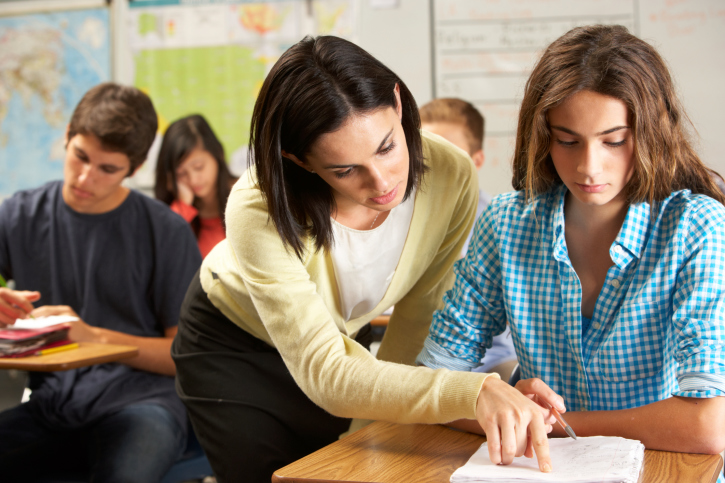Where does learning occur?
Where does learning occur? The obvious answer for teachers is in the classroom. But the real answer is that learning occurs in the student’s brain. Bestselling author Daniel Coyle in his book The Talent Code describes the process of learning a skill as a process of neural pathways being insulated more and more with myelin, thus improving the conductivity of these brain circuits. The result is an “unconscious competence that often seems inherited but is always the result of the myelinization process.” He says the effect is like increasing the bandwidth of the brain. DataWORKS founder John Hollingsworth describes this process as building automaticity. It’s like learning to ride a bike or drive a car. At first, you have to focus on every detail, but with practice, you can perform the action without even thinking about it. It has become automatic.
Where does teaching take place?
The challenge is for the teacher to optimize the input to each student’s brain. So where does teaching take place? Again, the obvious answer is in the classroom. But a better answer comes from Coyle, who says, “Teaching is about interaction, not just action. …good teaching happens in the space between the teacher and the learner.” What this means is that teaching and learning take place when the teacher and the student are interacting – and that is, in most cases, at the lesson level. That is why DataWORKS believes true educational reform has to be at the level of the lesson. That is where change occurs. That is the key to improving test scores and improving lives.
How do we make lessons most effective?
So the question then becomes how to make the lessons most effective. How can teachers make their daily interactions most beneficial for student learning? The research (Joyce & Showers, 2002) says that learning a NEW skill (to the point of becoming automatic with it) is achieved five percent by learning theory, 10 percent by adding demonstration, 20 percent by adding practice, 25 percent by adding feedback, and 90 percent by adding in-situation coaching. Thus, to be most effective, lessons must provide time for coaching, or what we would call interaction between teacher and student about the content. Teachers are really “coaching” the students in ELA, Math, and all subjects. Coyle says that successful coaches have several behaviors in common:
- They have a profound understanding of what is needed.
- They are confident and steady when facing learners.
- They observe and listen very carefully.
- They offer small, concise, highly targeted adjustments to those engaged in learning.
- They tailor their suggestions to the individual student as much as possible.
What is the secret to effective lesson delivery?
How can teachers gain and use this quality of interaction in each lesson? The secret is that teachers have to make this ability to “coach” or deliver a lesson with all the above five qualities as automatic as possible. The best way is for teachers to learn how to do it from someone who coaches them – at the lesson level – not in theory or in group training – but in the space where learning occurs! For teachers to learn new skills for delivering lessons that have the most impact on students, they need to practice their teaching skills (while being coached) and thus build the myelin around their brain circuits so that the skills become as automatic as driving a car.
How do we make effective delivery automatic?
Coyle says there are certain steps to this “deep practice” that lead to automatic excellence:
- Vision of the whole. Absorb as a whole the thing you are practicing until it feels familiar. This provides the overall context for the learning task. Example: Observe effective, engaged, interactive lessons by teachers who have mastered the skills to automaticity. Some of the most effective strategies for lesson delivery include using engagement techniques such as whiteboards, Pair-Share, choral reading, attention signals, complete sentences, and the DataWORKS method of TAPPLE for Checking for Understanding every two minutes.
- Chunk it. Break the task into smaller, easily managed pieces. Example: Practice delivering the components of a well-crafted lesson, such as: Learning Objectives, Concept Development, Skill Development, Relevance, Closure, Independent Practice, Checking for Understanding, and Engagement Norms.
- Slow it down. Whenever any problem arises, go slower. Work on parts, correct them; then move forward at a normal speed. Example: If you are not used to “working a page” for concept development, then go slower through each step. If you are not used to Checking For Understanding many times during a lesson, go slower; call on students several times and ask more questions until you get the hang of it.
- Repeat it. Work with intensity, trying to eliminate any imperfections. Remember, practice doesn’t make perfect, it makes permanent. That is, when we practice certain skills, it builds up the myelin around specific neurons in the brain – so we need to get it right. Example: Teachers could do demonstration lessons with in-situation coaching, team teach parts of lessons with other teachers, or use a new technique in class each week for so many weeks.
Coyle says as time goes on, you want to become aware of the excellence of your craft. Feel the “bits away from perfection” and fix them rigorously. In fact, he says, “the longer you stagger, the more quickly you will succeed.”

